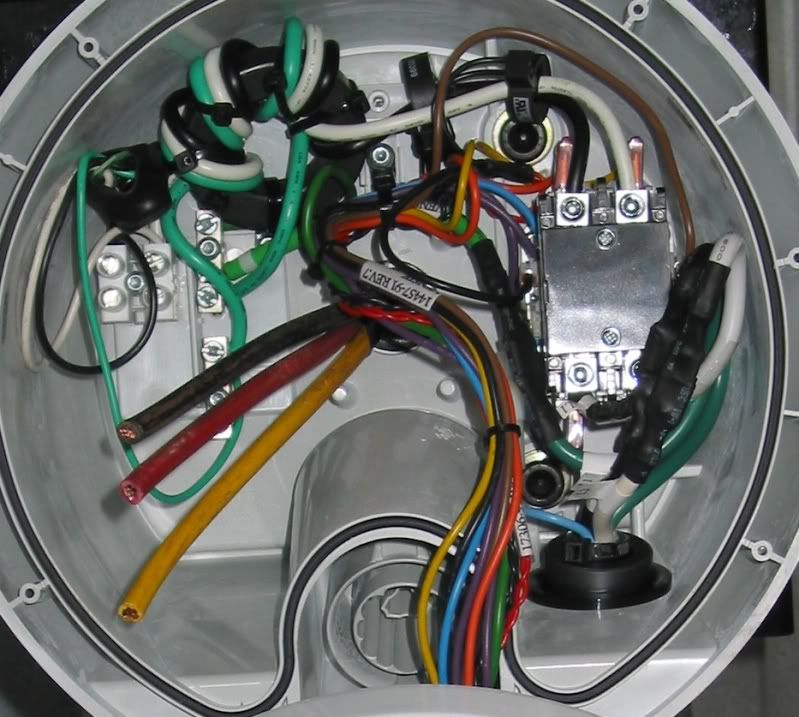wwhitney said:
OK, so I would think the car chassis would be insulated from the ground via the rubber tires, but let's suppose it isn't. What is the connection between the EVSE and the car chassis? I would think that the EVSE L1 and L2 (and charger inputs L1 and L2) would both be isolated from the car chassis/ground. Where does L1 or L2 get connected to the car chassis/ground?
It's "relatively" insulated if it's clean and dry. Tire companies normally add a bit of conductive material to the tires to help dissipate static charges. (known to be responsible for a lot of gas station fires)
Once it's dirty and wet, it's a pretty good conductor however, more than enough for a few mA!
There are 5 pins in the J1772 connector: L1, L2, Pilot, Proximity, and GROUND. The ground pin connects the building electrical system to the car.
wwhitney said:
I wasn't aware that any GFCIs had a separate current transformer for the EGC, but I'm not familiar with the standards for medical equipment. What fault scenarios would this cover that the differential current in the circuit conductors would not cover? Or is it just that the trip threshold on the EGC can be set even lower than the typical 5ma GFCI threshold, because under proper operation there should be no current on the EGC? In any event I don't think that EVSEs typically have a current transformer on the EGC.
Most of the GFCI's I've looked at that have this feature do not use a CT. They simply use a small shunt to detect any current on that conductor. One of the reasons this secondary detection might be useful is if the CT fails open in the GFCI or an external source of power somehow enters your car. (or your body in the case of medical equipment)
This line of thinking has made me realize another possibility; The spec says that the EVSE should perform a ground check. Maybe a high-resistance ground or intermittent connection caused the trip?
In the Panasonic EVSE, they verify they can pass a small current between ground and L1 as their ground verification. In this scenario, a neutral to ground disturbance could cause this test to fail momentarily, such as during a thunderstorm.
Anyway, we are all doing a bunch of speculation. We could make a more accurate assessment if we knew the methods used in the AV EVSE.

